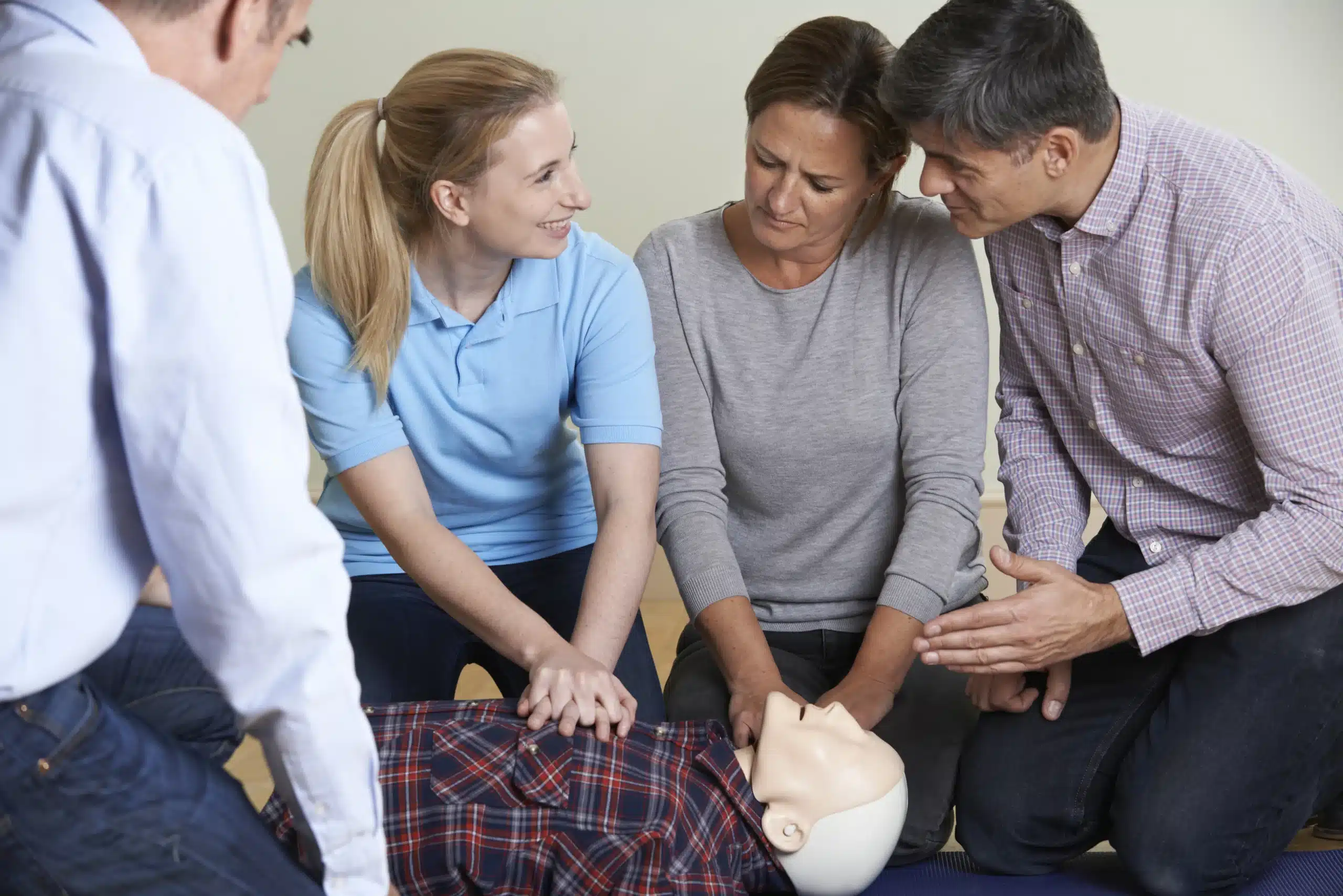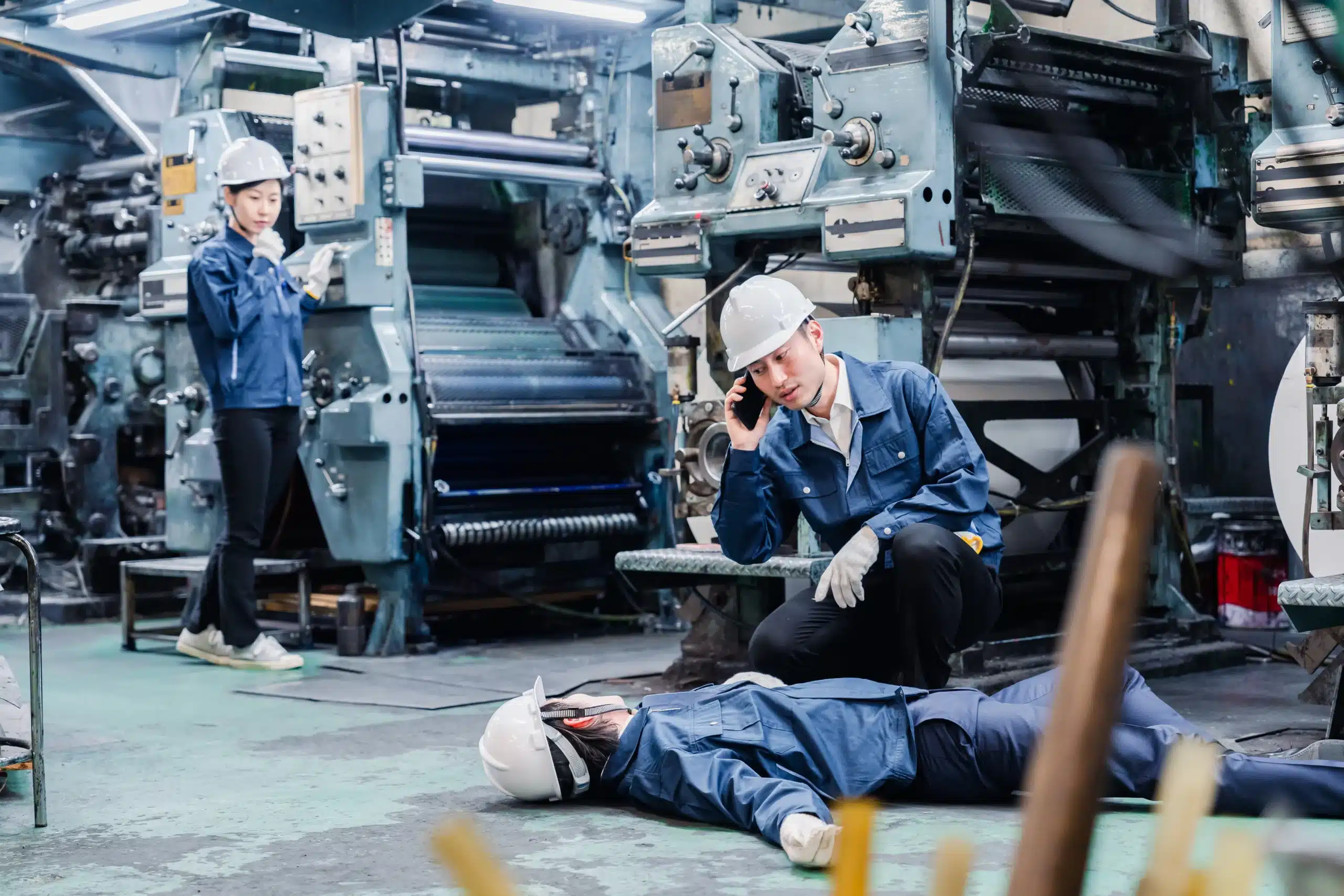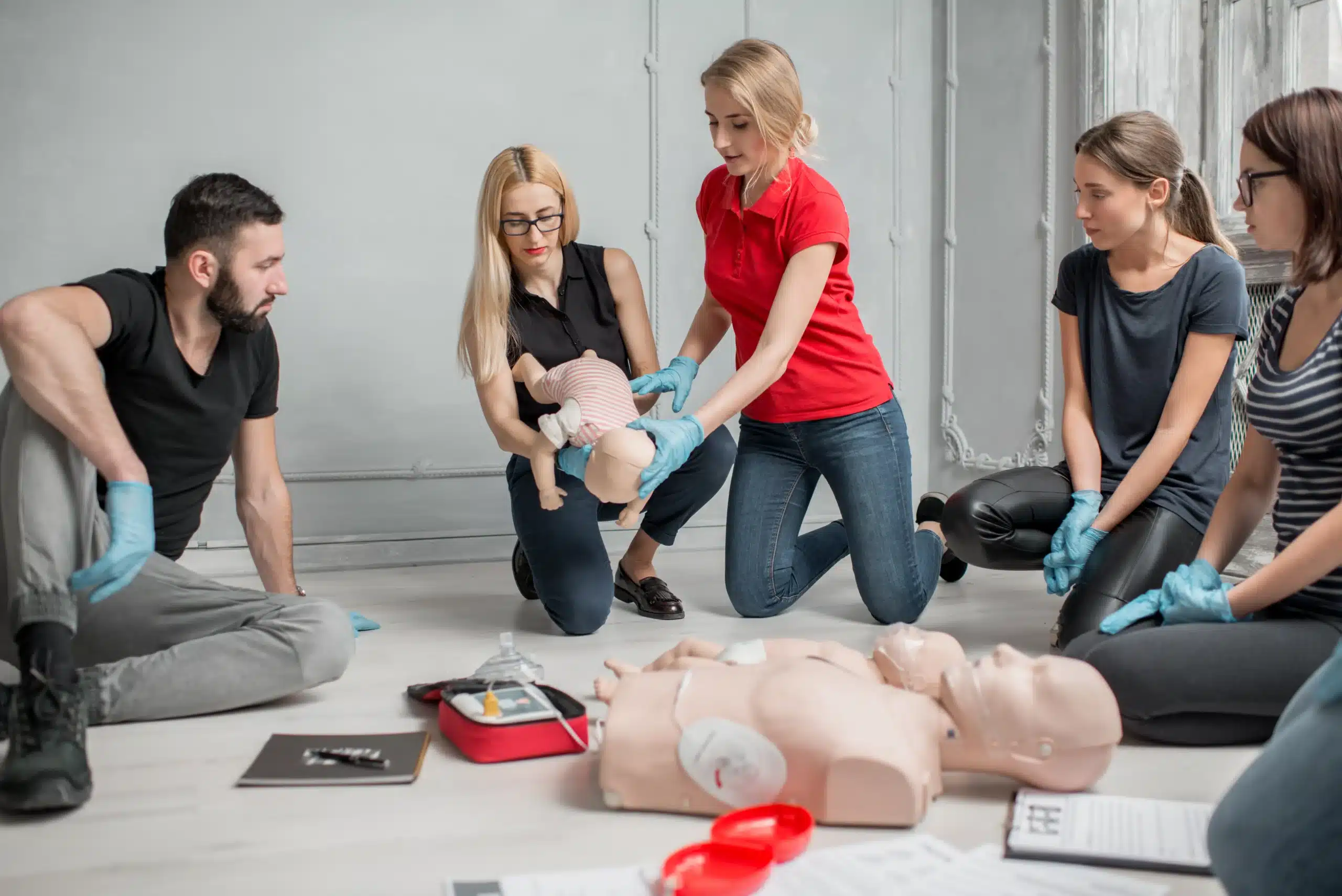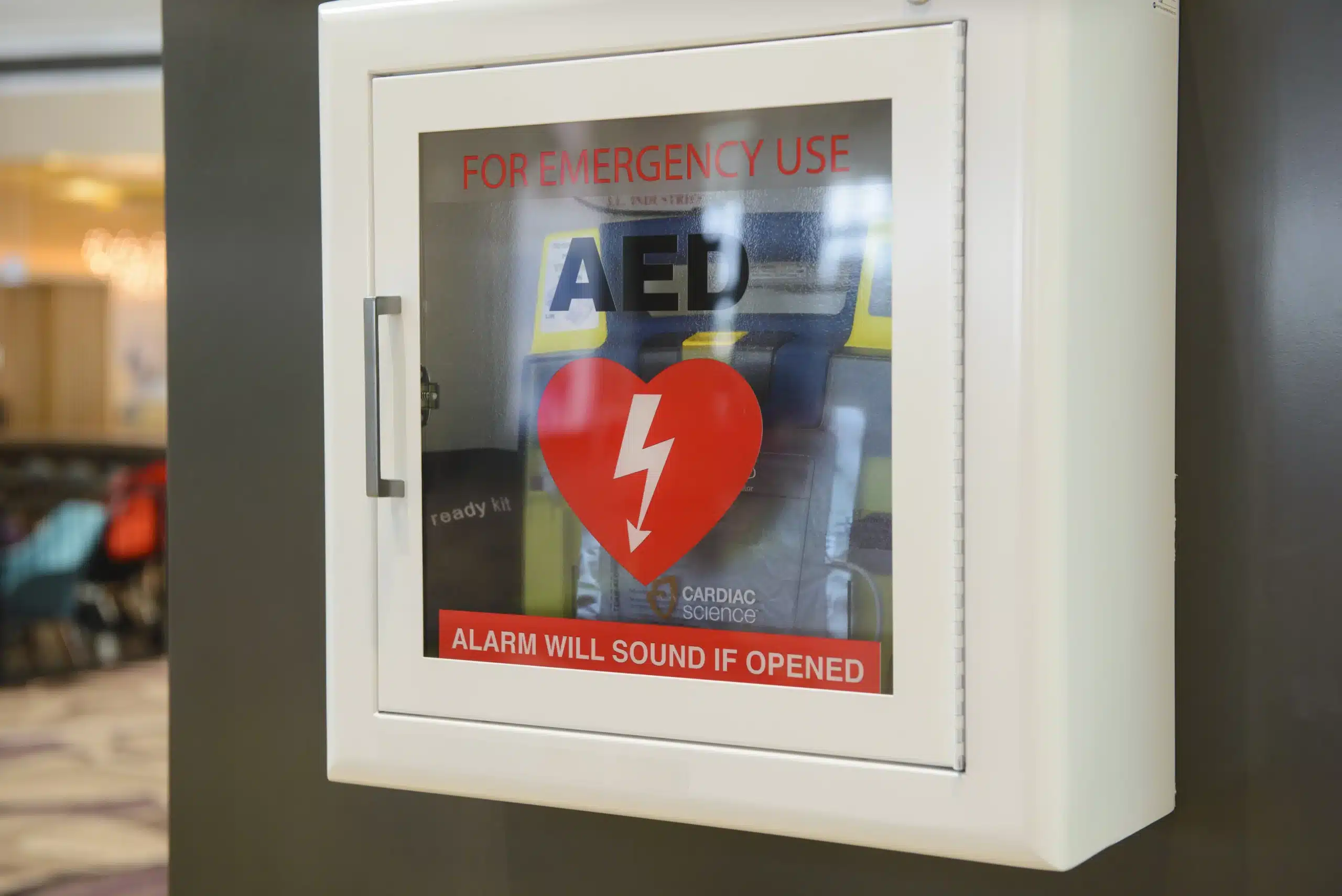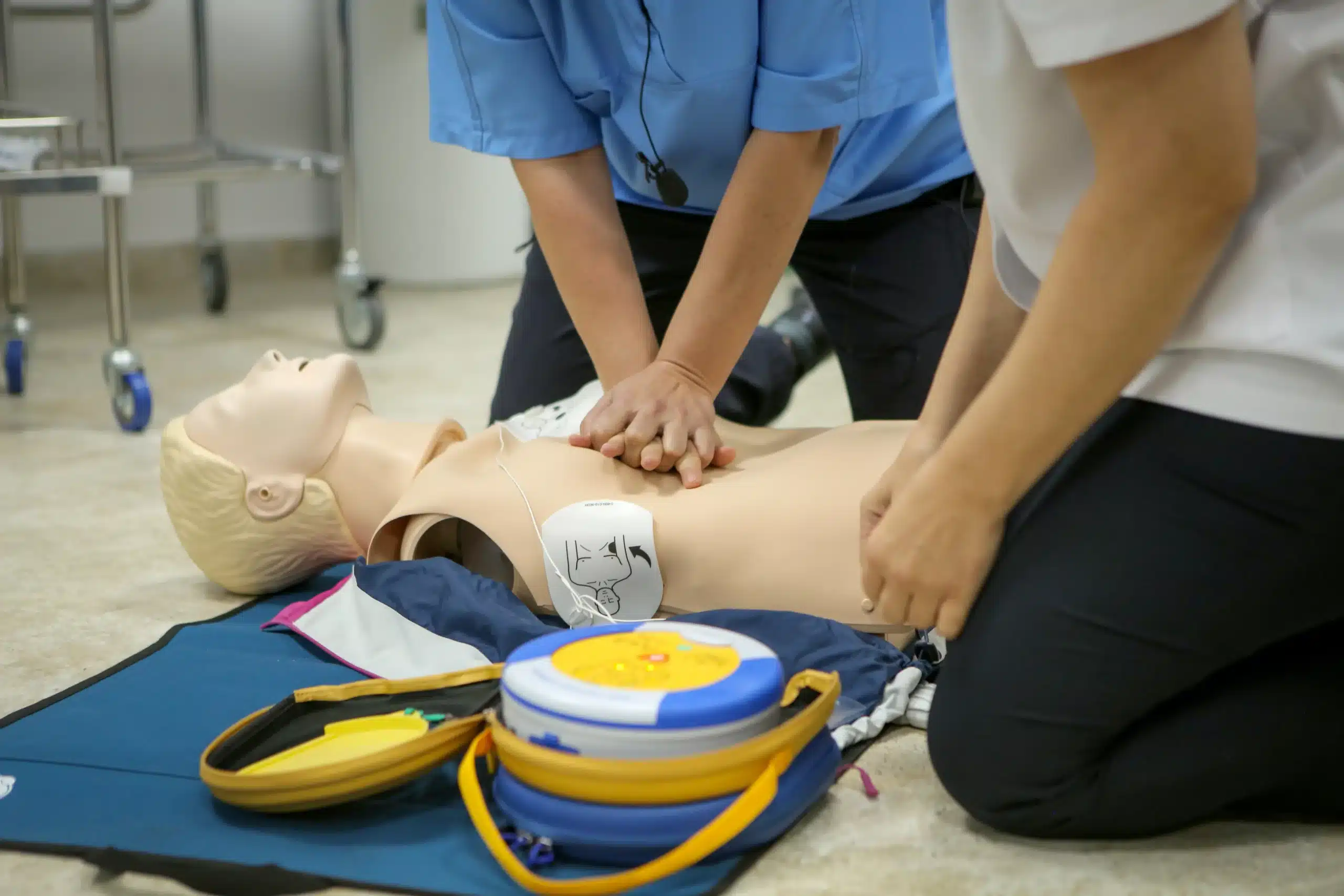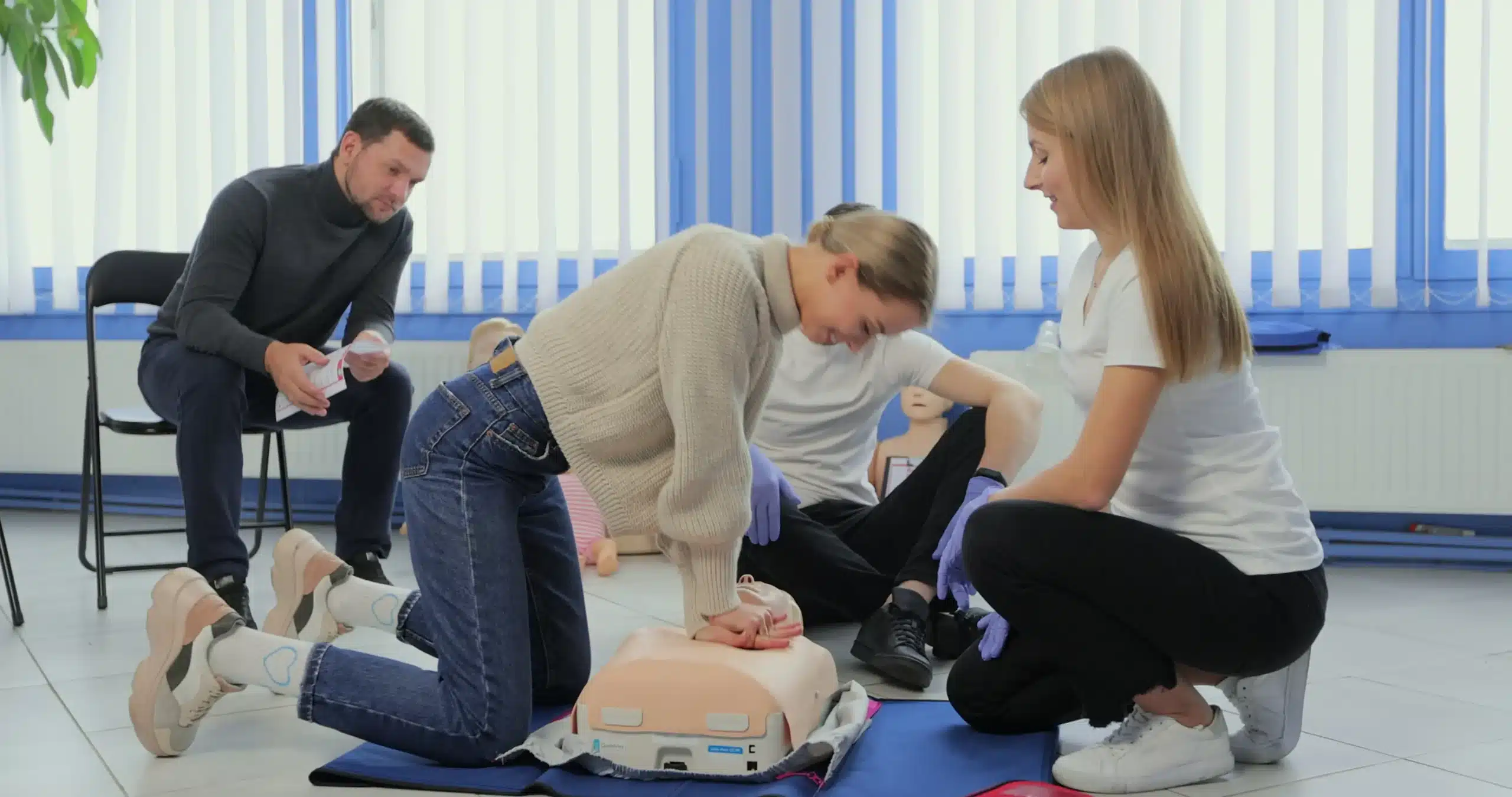Emergencies can happen anytime, anywhere. Being equipped with the skills to respond effectively can make a world of difference. If you’re in Sacramento and looking to get BLS certified, this guide is for you. We’ll cover everything you need to know about BLS certification in Sacramento, from the core skills taught to the various training options available. We’ll also discuss the cost of certification, class formats, and how to choose the right program for your needs. Whether you’re a healthcare provider, a student, or simply someone who wants to be prepared, this guide will provide you with the information you need to get started.
Key Takeaways
- BLS certification empowers you to save lives: Whether you’re a healthcare provider or someone who wants to be prepared, BLS training provides the knowledge and skills to respond effectively in medical emergencies.
- Choose the right BLS course for your needs: Consider factors like accreditation, instructor experience, and class size to find a program that fits your learning style and schedule. Many convenient options are available, including in-person, blended, and online formats.
- Stay current with your BLS skills: Regular practice and recertification are essential for maintaining your competence and confidence in providing emergency medical care. Take advantage of continuing education resources to stay up-to-date with the latest guidelines.
What is BLS Certification?
Definition and Importance
Basic Life Support (BLS) certification is a vital credential for healthcare professionals and anyone in a position to respond to medical emergencies. It goes beyond basic CPR, equipping individuals with the skills to address life-threatening situations effectively. While many assume BLS certification is just for doctors and nurses, it’s a valuable asset for various professions, including teachers, coaches, and childcare providers. BLS training emphasizes early intervention and provides the knowledge and confidence to act quickly and decisively when every second counts, potentially improving patient outcomes and increasing the chances of survival. For those in the Woodland, Davis, and Sacramento areas, Woodland CPR Classes offers a range of convenient and comprehensive BLS certification courses.
Key BLS Skills
BLS certification covers a comprehensive range of skills essential for responding to various medical emergencies. The training provides a strong foundation in CPR for adults, children, and infants, ensuring you can adapt your techniques to different age groups. You’ll learn how to use an Automated External Defibrillator (AED), a critical device for restoring normal heart rhythm during cardiac arrest. BLS courses also address essential skills like relieving choking and basic airway management. Beyond the technical skills, BLS training emphasizes teamwork, communication, and critical thinking, preparing you to work effectively in high-pressure situations. This includes understanding scene safety and how to best coordinate with other responders. For a comprehensive program covering these skills and more, explore the BLS certification courses available at Woodland CPR Classes.
Find BLS Certification in Sacramento
Finding the right BLS certification course in Sacramento means understanding your options. From established organizations to independent training centers, several paths lead to becoming certified. Let’s explore where you can find BLS training in the Sacramento area.
AHA Training Centers
The American Heart Association (AHA) sets the standard for BLS training. You can find official AHA BLS courses through their network of authorized training centers in Sacramento. These courses, designed for healthcare providers, cover essential skills for responding to cardiac emergencies. Many centers offer both in-person and online options, so you can choose the learning format that works for you.
American Red Cross
The American Red Cross also provides comprehensive BLS certification and renewal training in Sacramento. They offer flexible training formats, including in-person classes and blended learning, which combines online coursework with hands-on skills sessions. This blended approach can be a great way to fit training into a busy schedule.
Hospitals and Medical Centers
Many Sacramento hospitals and medical centers require BLS certification for their staff. Check with local hospitals to see if they offer BLS training programs. Earning your BLS certification can be a valuable asset when applying for jobs at these facilities.
Private Training Companies
Several private companies in the Sacramento area offer BLS certification courses. Here are a few to explore:
Woodland CPR Classes
Woodland CPR Classes offers the AHA’s Resuscitation Quality Improvement (RQI) program, a streamlined approach to BLS certification and renewal, especially convenient for healthcare professionals maintaining their credentials. They also offer more traditional AHA BLS courses.
CPR Certification Sacramento
CPR Certification Sacramento provides AHA BLS CPR and AED certification classes. They emphasize affordability and convenience, offering same-day certification cards upon completing the course.
Safety Training Seminars
Safety Training Seminars offers another option for BLS training in Sacramento. As a woman-owned AHA Training Center, they focus on high-quality instruction and thoroughly preparing students for emergency situations.
BLS Certification: Cost & Value
Getting BLS certified is an investment in your skills and ability to respond to emergencies. Let’s break down the typical costs associated with BLS certification in Sacramento and explore the value this training provides.
Sacramento Price Range
In Sacramento, BLS certification courses typically start around $59.95, often including your same-day certification card upon successful completion. Many providers, like Woodland CPR Classes, offer competitive pricing to make BLS training accessible. Knowing the general price range helps you budget for this important training.
Cost Factors
Several factors influence the cost of a BLS course. The training covers essential skills for healthcare providers and first responders, including CPR, First Aid, AED use, and stroke recognition. Beyond these core skills, BLS courses also emphasize scene safety, critical thinking, teamwork, and legal considerations. This comprehensive approach ensures participants are well-prepared for various real-life emergencies, adding to the overall value of BLS certification.
Discounts and Promotions
Looking to save on your BLS certification? Keep an eye out for discounts and promotions. Some organizations offer coupons for training materials, books, and emergency preparedness supplies. You might also find discounts on American Heart Association courses like BLS, ACLS, and PALS. Check with providers like Woodland CPR to see what promotions are available. These savings can make high-quality training even more attainable.
Class Duration and Formats
Finding the right BLS certification course often involves balancing your schedule with the learning format that suits you best. Thankfully, there are several options available, allowing you to choose a course that fits your needs. At Woodland CPR Classes, we understand the demands of a busy schedule and offer various formats to accommodate your learning style and availability.
In-Person Training
Traditional in-person training remains a popular choice. This format offers hands-on learning and direct interaction with a certified instructor. You’ll practice skills in a real-time environment, receive immediate feedback, and have the opportunity to ask questions. Providers like the American Red Cross offer in-person BLS training in Sacramento. Woodland CPR Classes also provides in-person training, emphasizing personalized instruction and small class sizes for a more focused learning experience.
Online & Blended Learning
For those seeking more flexibility, online and blended learning options are increasingly common. Blended learning typically combines online coursework with an in-person skills session. This allows you to learn the theoretical aspects of BLS at your own pace, then demonstrate your skills in a practical setting. This hybrid approach can be a great way to fit BLS training into a busy schedule. The Red Cross offers this blended learning format, and you can explore similar options with other providers like Woodland CPR Classes.
Class Length & Schedule
BLS certification courses are generally concise and focused. Most BLS courses are approximately three hours long, as indicated by resources like CPR Certification Sacramento. Renewal is typically required every two years. With various course schedules available, you can find a class that accommodates your commitments, whether you prefer a weekday evening, a weekend session, or an intensive one-day course. Check with your chosen provider, such as Woodland CPR Classes, for specific schedules and availability.
BLS Course Content
BLS certification covers a range of life-saving skills applicable to various medical emergencies. It goes beyond basic CPR to equip healthcare providers and first responders with the knowledge and techniques needed in critical situations. Here’s a closer look at what you’ll learn in a BLS course:
Adult, Child, and Infant CPR
BLS builds upon the foundational skills of CPR, encompassing techniques for adults, children, and infants. You’ll learn how to recognize the signs of cardiac arrest and respiratory distress, deliver effective chest compressions, and provide rescue breaths. The course emphasizes the importance of high-quality CPR and provides ample opportunity to practice these skills. This comprehensive approach ensures you’re prepared to respond confidently in real-world emergencies. For more information on the differences between BLS and CPR certification, the Red Cross offers a helpful comparison.
AED Use and Care
Automated External Defibrillators (AEDs) are essential tools in cardiac arrest situations. BLS training includes how to properly use and maintain these devices. You’ll learn how to assess a patient’s rhythm, apply AED pads, and deliver a shock when necessary. The course also covers AED safety precautions and troubleshooting. Understanding AED operation is a crucial component of BLS certification, empowering you to provide prompt and effective care.
Choking Relief
Choking can be a life-threatening emergency, and BLS training equips you with the skills to intervene effectively. You’ll learn how to recognize the signs of choking in both conscious and unconscious individuals and perform appropriate techniques to clear the airway. This includes abdominal thrusts (Heimlich maneuver) and back blows for conscious victims, as well as chest compressions and finger sweeps for unconscious victims. Mastering these choking relief techniques can make a significant difference.
Team Dynamics & Communication
Effective teamwork and communication are vital in medical emergencies. BLS training emphasizes the importance of clear communication, coordinated efforts, and efficient teamwork among healthcare professionals. You’ll learn how to assign roles, share information, and work together seamlessly during a medical crisis. The Red Cross highlights these skills in their BLS training, preparing you to function effectively as part of a medical response team.
BLS vs. CPR Certification
Skill Levels and Target Audience
CPR (Cardiopulmonary Resuscitation) teaches essential life-saving skills like chest compressions and rescue breaths for use in cardiac arrest situations. It’s designed for anyone who wants to learn these skills, from concerned parents and teachers to workplace safety officers. CPR certification often fulfills workplace requirements and empowers everyday people to respond effectively during emergencies. You can explore CPR and First Aid certification courses on our website. BLS (Basic Life Support) certification, on the other hand, goes a step further. It’s geared towards healthcare professionals like doctors, nurses, EMTs, and other first responders. BLS covers everything in CPR training but adds advanced techniques for various medical emergencies, including cardiac arrest, respiratory distress, and airway obstruction.
Choosing BLS over Basic CPR
If you’re a healthcare professional or first responder, BLS certification is likely a requirement for your job. It provides the in-depth training necessary to meet professional standards and handle a broader range of medical emergencies. Even if your workplace doesn’t specifically require BLS, it offers a significant advantage by equipping you with more advanced life-saving skills. This can be crucial in effectively managing complex medical situations and providing higher-quality care. For those outside the healthcare field, standard CPR training is usually sufficient and meets most workplace safety requirements. However, anyone seeking a more comprehensive understanding of emergency medical response could benefit from the additional skills taught in a BLS course. We offer a variety of courses to fit your needs.
Choose the Right BLS Program
Finding the right BLS program is crucial for receiving high-quality training that prepares you for real-life emergencies. Here’s what to consider when making your decision:
Accreditation and Recognition
Look for a program accredited by a nationally recognized organization like the American Heart Association (AHA)). The AHA’s RQI program is a popular choice for medical professionals seeking BLS, ACLS, and PALS certification. It’s known for its modern approach and efficient training. AHA certification is widely accepted and ensures your training meets established standards. For those in Woodland, Davis, or Sacramento, Woodland CPR classes offers a variety of AHA-accredited courses.
Instructor Qualifications
Experienced, certified instructors are essential for effective BLS training. Instructors should have a strong background in healthcare and extensive experience teaching BLS skills. Check if the training center employs instructors who are actively involved in the medical field. Safety Training Seminars, a woman-owned AHA Training Center, emphasizes high-quality instruction for its BLS courses in Woodland, CA.
Class Size and Practice Time
Hands-on practice is key to mastering BLS skills. Smaller class sizes allow for more individualized attention from instructors and ample opportunity to practice techniques like CPR and AED use. Look for programs that prioritize hands-on training and offer sufficient practice time. CPR Sacramento highlights the benefits of smaller class sizes for better skill development. A good BLS program will balance instruction with practical application, ensuring you feel confident and prepared to respond to emergencies.
Maintain Your BLS Certification
Keeping your BLS skills sharp is crucial for any healthcare provider. This section covers how to maintain your certification and stay up-to-date with the latest life-saving techniques.
Renewal Requirements
BLS certification, like general CPR certification, is valid for two years. To maintain your credentials, you’ll need to recertify before it expires. Check with your certifying organization, such as the American Heart Association or the American Red Cross, for specific renewal guidelines. Recertification courses are often shorter than the initial certification course, as they build upon your existing knowledge. You’ll likely need to provide proof of a current or recently expired BLS provider card to enroll.
Continuing Education
Even if your certification isn’t up for renewal yet, staying current with BLS practices is essential. The medical field is constantly evolving, so regularly reviewing updated guidelines for CPR, AED use, and other procedures is key. Take advantage of online resources and continuing education opportunities to refine your skills. Many organizations offer online refresher courses, articles, and videos covering the latest BLS guidelines and best practices, including high-quality CPR and the use of automated external defibrillators (AEDs). These resources will help you maintain confidence and competence in your BLS skills.
BLS Certification: Common Myths
Let’s clear up some common misconceptions about BLS certification. These myths can prevent people from getting the training they might need to save a life.
Who Needs BLS?
One of the biggest misunderstandings about BLS is that it’s only for doctors and nurses. While essential for healthcare providers, it’s also incredibly valuable for anyone who might find themselves in an emergency situation. Think teachers, coaches, lifeguards, personal trainers—even parents. Knowing BLS, including how to use an AED and manage someone’s airway, empowers you to respond effectively if someone experiences cardiac arrest or another emergency. BLS training equips people with life-saving skills.
Online vs. In-Person Effectiveness
Another myth is that online BLS certification isn’t as good as in-person training. Many accredited online BLS courses offer comprehensive instruction and practical skill development that are just as effective as traditional classroom learning. If you have a busy schedule or limited access to in-person classes, online BLS training can be a great option. Just make sure the program meets the same standards as in-person classes and is accepted by your employer or certifying body.
Regular Practice: Why It Matters
It’s easy to think that once you’re BLS certified, you’re good to go forever. But like any skill, BLS requires regular practice. Guidelines and best practices for emergency response can change, so refreshing your knowledge and skills through recertification is essential. Regular practice ensures you’re always prepared to provide effective care in a real-life emergency. Think of it like a driver’s license—you renew it periodically, and BLS certification is no different. Staying up-to-date could make all the difference.
Get BLS Certified in Sacramento
Getting your BLS certification in Sacramento is straightforward, and we’ll guide you through the process. Whether you’re a healthcare provider, a student entering the medical field, or someone who wants to be prepared for emergencies, having current BLS certification is a valuable asset.
Enroll in a BLS Course
First, find a reputable training center. The American Red Cross offers various BLS certification and renewal courses, including in-person and blended learning formats (online coursework combined with in-person skills sessions). For those seeking American Heart Association (AHA) BLS CPR and AED certification, CPR Certification Sacramento is another option, offering same-day certification cards. Residents of Woodland, Davis, and Sacramento can find convenient daily classes at Woodland CPR.
Prepare for Your Class
Once you’ve enrolled, take some time to prepare. Complete any online coursework if you’ve chosen a blended learning format. This allows you to focus on hands-on skills practice during the in-person session. Review any pre-course materials your training center provides to familiarize yourself with the basics beforehand.
BLS Training Success Tips
Hands-on practice is essential for mastering BLS skills. Don’t hesitate to ask your instructor questions during class—a good instructor will welcome your inquiries. A supportive learning environment can significantly impact your learning experience, so choose a class that fosters a comfortable atmosphere. Consider class size, as smaller classes often provide more individualized attention and practice opportunities. Finally, remember that consistent practice after certification is vital for maintaining your skills and confidence in emergencies.
Related Articles
- BLS for Healthcare Providers in Sacramento: A Complete Guide – Woodland CPR Classes
- BLS Classes in Sacramento: A Complete Guide
- HeartCode BLS Sacramento: Your Certification Guide – Woodland CPR Classes
- Advanced Cardiac Life Support (ACLS) in Sacramento – Woodland CPR Classes
- BLS for Healthcare Providers in Davis: A Complete Guide – Woodland CPR Classes
Frequently Asked Questions
How long does it take to get BLS certified?
BLS courses are typically efficient and can often be completed in a single day, usually within a few hours. The exact duration can vary slightly depending on the training center and the specific course format you choose (in-person, blended learning, etc.).
Is online BLS certification as good as in-person training?
Yes, many online BLS certification courses are just as effective as in-person training. Look for online programs accredited by reputable organizations like the AHA, which offer comprehensive instruction and require a hands-on skills assessment component. This blended approach ensures you receive both theoretical knowledge and practical training.
How much does BLS certification cost in Sacramento?
The cost of BLS certification in Sacramento varies but typically falls within the $60-$90 range. Factors influencing the price include the training center, course format, and whether any additional materials are included. Be sure to compare prices from different providers and look for any available discounts or group rates.
How often do I need to renew my BLS certification?
BLS certification is typically valid for two years. You’ll need to take a recertification course before your current certification expires to maintain your credentials and stay up-to-date with the latest guidelines and techniques.
What’s the difference between BLS and CPR certification?
CPR certification teaches the basics of cardiopulmonary resuscitation, including chest compressions and rescue breaths. BLS certification builds upon those skills and includes more advanced techniques for managing various medical emergencies, such as using an AED and relieving choking. BLS certification is generally required for healthcare professionals, while CPR certification is suitable for a broader audience, including teachers, coaches, and other community members.

